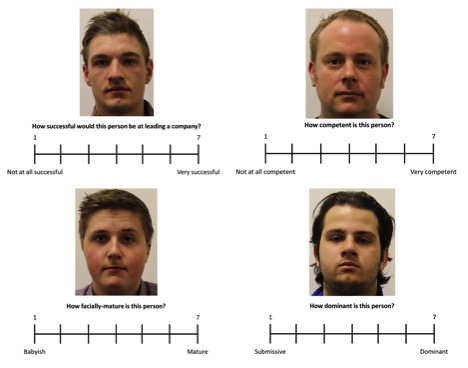The Face of Leadership: How CEOs’ Facial Appearance Predicts Business Success
Recent research in social psychology has demonstrated that the facial appearance of Chief Executive Officers (CEOs) and other business leaders predicts their companies’ financial performance. In this article, we review initial evidence illustrating the relation between CEO facial appearance and corporate success. We then delve into more recent research on how this relationship varies by economic climate, leader ethnicity, and CEO sex. Further studies are discussed that examined how facial cues related to CEO success vary across cultures. Finally, we discuss the implications of this research, and how these findings relate to real world organizations.
---
A picture may be worth a thousand words, but does this apply to pictures of peoples’ faces? People can obviously determine traits like race, sex, and age from a look at the face. New research in the field of perceptual psychology, however, has shown that one can judge less obvious aspects of someone’s personality, too. Dimensions such as religious beliefs (Rule, Garrett, & Ambady, 2010), political affiliation (Samochowiec, Wanke, & Fiedler, 2010), and sexual orientation (Rule, Ambady, Adams, & Macrae, 2008) can all be judged more accurately than chance guessing from looking at faces. Recently, this line of investigation has shown that people can judge another kind of trait from faces, one that has interesting implications for business and human resources: business leadership ability. That is, people can roughly tell how good of a leader someone is just from looking at his or her face.
Facial appearance and CEO success – the first studies
There is a long history of research demonstrating that facial appearance influences leadership selection in politics (see Olivola & Todorov, 2010, for review). More recently, however, an expanding literature in psychology and management has shown that facial appearance predicts the present or future financial success of business leaders. The first such study in this field was simple enough: undergraduate students viewed photos of 50 CEOs from the Fortune 1000 (Rule & Ambady, 2008). Participants were given headshot portraits of the CEOs (none of them recognized the CEOs, in fact they did not know the people in the photos were CEOs) and were asked to rate them for leadership ability (Figure 1). Separate participants rated the faces for emotional affect and attractiveness and CEO age was calculated to control for these extraneous variables when the researchers measured the relationship between perceived leadership ability and the companies’ actual profits. The results showed that facial appearance predicted the CEOs’ ability to successfully lead their companies, as indicated by the amount of profit that each CEO’s company had publicly reported earning. A second experiment found that how competent, dominant, and mature each CEO seemed from their image explained the relationship between facial appearance and firm performance (Rule & Ambady, 2008). These trait perceptions are often associated with masculine facial characteristics (e.g., Watkins, 2011). The results of these studies were astonishing: naïve judgments of leadership success from business leaders’ faces predicted how successful they were in leading their company to financial gain.
 Figure 1. Examples of trials from facial perception tasks. Studies have demonstrated that judgments of leadership and personality traits (rated in separate tasks) from business leaders’ faces predict their companies’ financial performance.
Figure 1. Examples of trials from facial perception tasks. Studies have demonstrated that judgments of leadership and personality traits (rated in separate tasks) from business leaders’ faces predict their companies’ financial performance.


